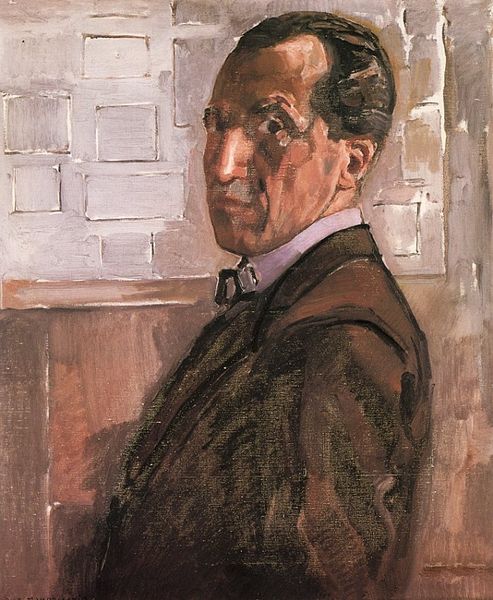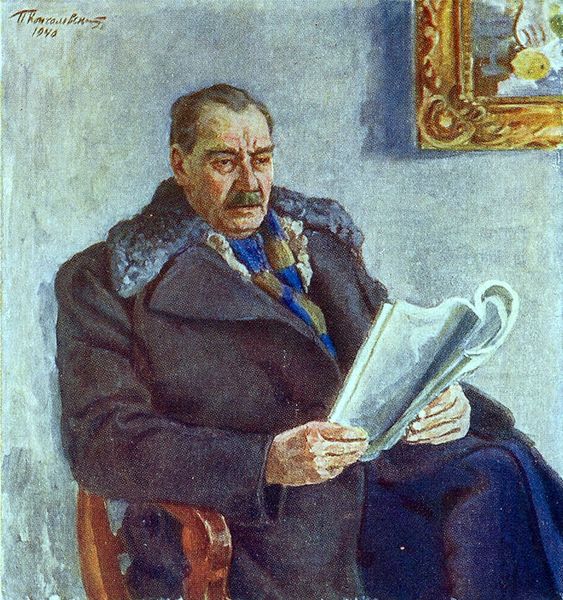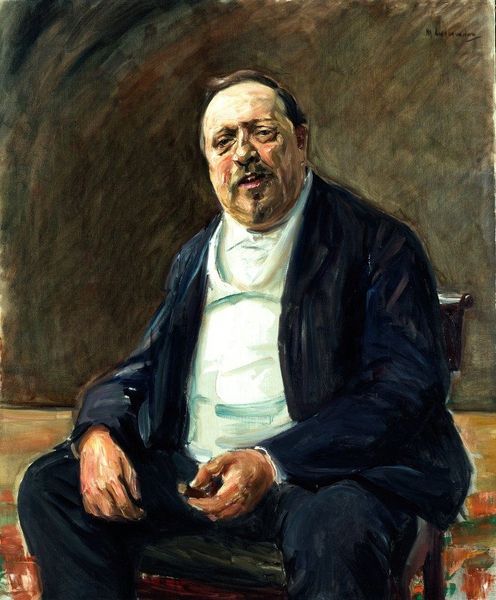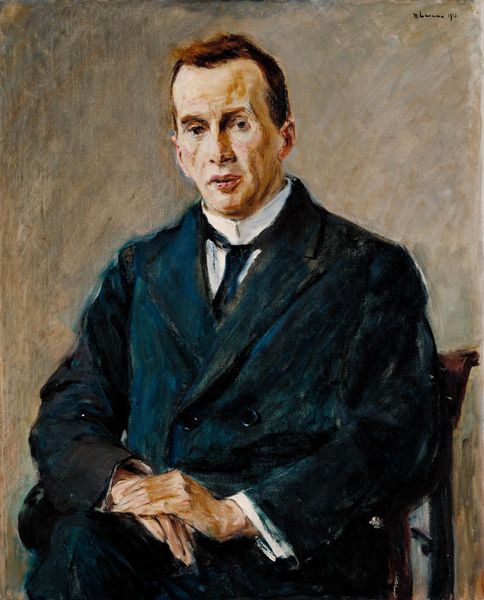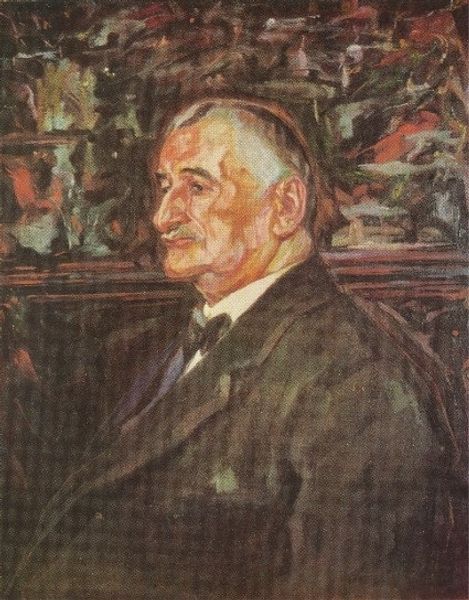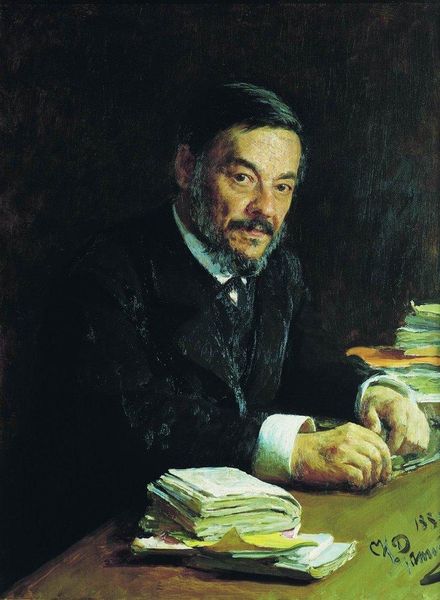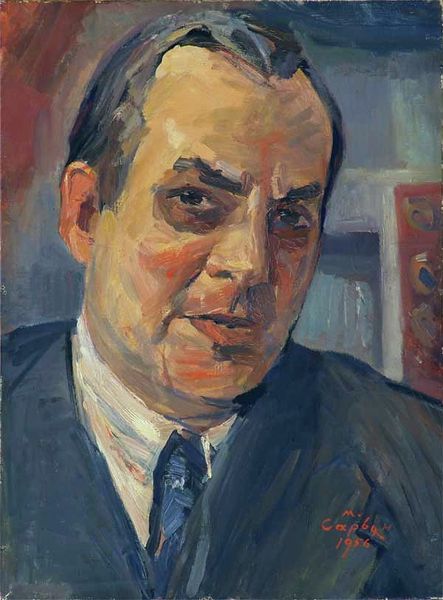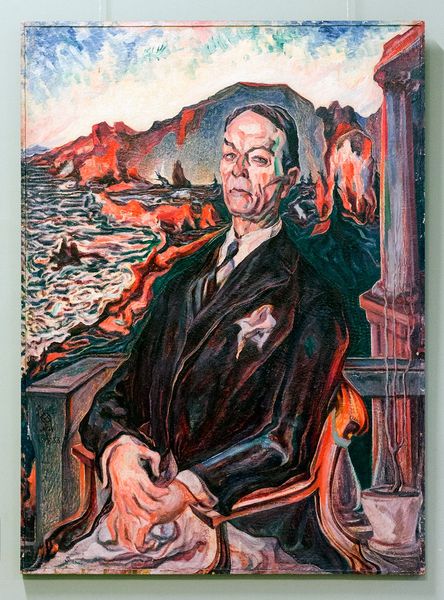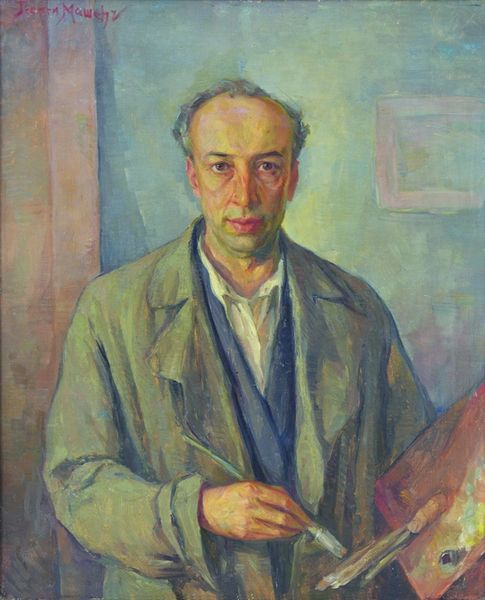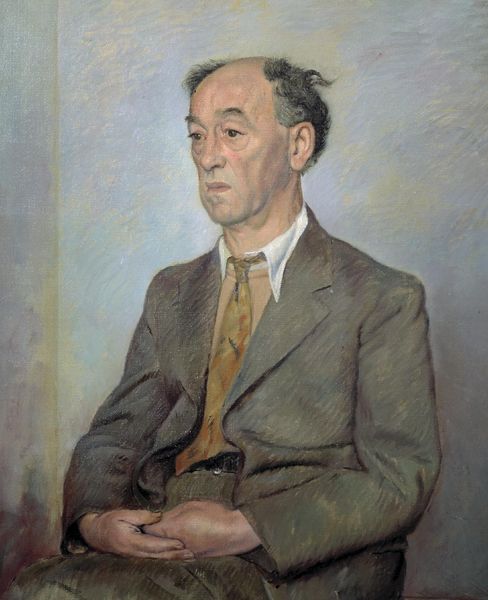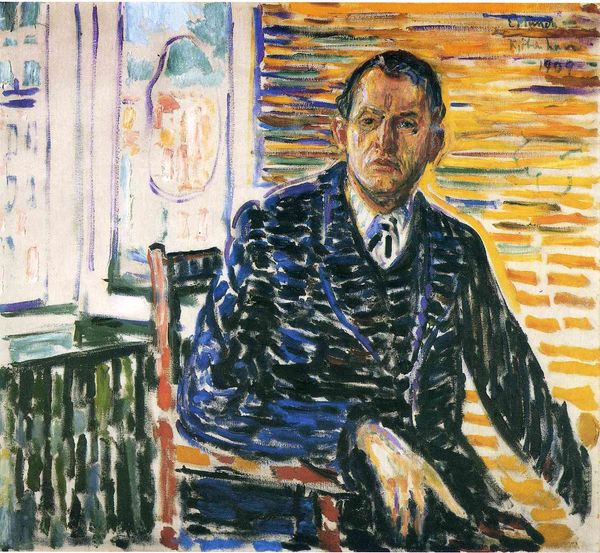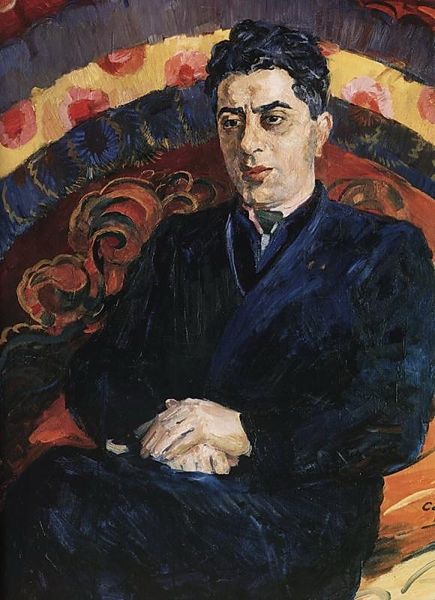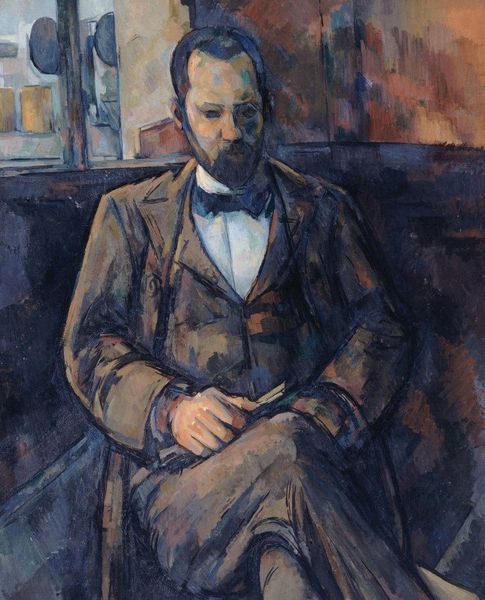
Copyright: Martiros Sarian,Fair Use
Editor: This is Martiros Sarian’s 1940 oil painting, "Portrait of Avetik Isahakyan." It has such a warm, contemplative mood to it. What stands out to you about this piece? Curator: Considering Sarian's material treatment here – the thick, almost tactile quality of the paint, alongside the broader cultural context, particularly in 1940, allows us to look at labor embedded within the art object. Editor: Labor? Curator: Yes, the artist’s labor, of course, in the application of paint but also consider the implied labor of the sitter, Avetik Isahakyan. What was his role? Editor: I think he was a famous Armenian poet and writer. Curator: Exactly! The act of writing, the material production of texts, becomes an unspoken element within this portrait. Moreover, we must acknowledge the socio-political context – the weight of Soviet expectations placed on artists and writers during this period. Does this alter our reading of this portrait? Editor: It makes me think about the purpose of such portraits: more than celebrating a person, they also become political objects that might either serve or resist state power. Curator: Precisely! Now look closely at Sarian's brushwork, how he balances recognizable figuration with gestural abstraction. How might his technique underscore or subvert established academic artistic labor practices, possibly reflecting wider societal changes? Editor: It almost feels like he's finding a middle ground, honoring tradition while hinting at a break from it, as much as his materials and production allowed him to. Thanks; that gives me a totally fresh way to view this painting. Curator: Indeed. By scrutinizing materials, process, and historical forces, we unlock further dimensions in understanding "Portrait of Avetik Isahakyan" and grasp art's intersection with the world beyond aesthetics.
Comments
No comments
Be the first to comment and join the conversation on the ultimate creative platform.
